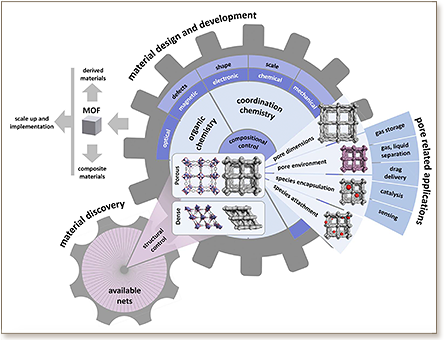

 Gas membrane-based separation is considered one of the furthermost effective technology to address energy efficiency and large footprint challenges. Various classes of advanced materials including polymers, zeolites, porous carbons and metal–organic frameworks (MOFs) were attempted as membranes for gas separation. MOFs, among other porous materials, possess uniquely tunable nature, in which the pore size and environment can be controlled by connecting metal ions (or metal ion clusters) with organic linkers with various functionalities. This feature makes them attractive for thin membrane fabrication, as both diffusion and solubility components of permeability can be altered. It is interesting to notice that numerous reports have addressed the synthesis of different MOFs, fabrication of their corresponding thin films and their applications, nonetheless, relatively limited studies addressed their gas separation application as membranes. In this review, we provide a synopsis of the various MOF-based membranes that were fabricated in the last decade. In this review we propose a short introduction touching on the gas separation membrane technology and we shed light on (i) the various techniques developed for the fabrication of MOF as membranes and (ii) challenges and application for MOF thin film membranes in various important gas separation applications.
Gas membrane-based separation is considered one of the furthermost effective technology to address energy efficiency and large footprint challenges. Various classes of advanced materials including polymers, zeolites, porous carbons and metal–organic frameworks (MOFs) were attempted as membranes for gas separation. MOFs, among other porous materials, possess uniquely tunable nature, in which the pore size and environment can be controlled by connecting metal ions (or metal ion clusters) with organic linkers with various functionalities. This feature makes them attractive for thin membrane fabrication, as both diffusion and solubility components of permeability can be altered. It is interesting to notice that numerous reports have addressed the synthesis of different MOFs, fabrication of their corresponding thin films and their applications, nonetheless, relatively limited studies addressed their gas separation application as membranes. In this review, we provide a synopsis of the various MOF-based membranes that were fabricated in the last decade. In this review we propose a short introduction touching on the gas separation membrane technology and we shed light on (i) the various techniques developed for the fabrication of MOF as membranes and (ii) challenges and application for MOF thin film membranes in various important gas separation applications.